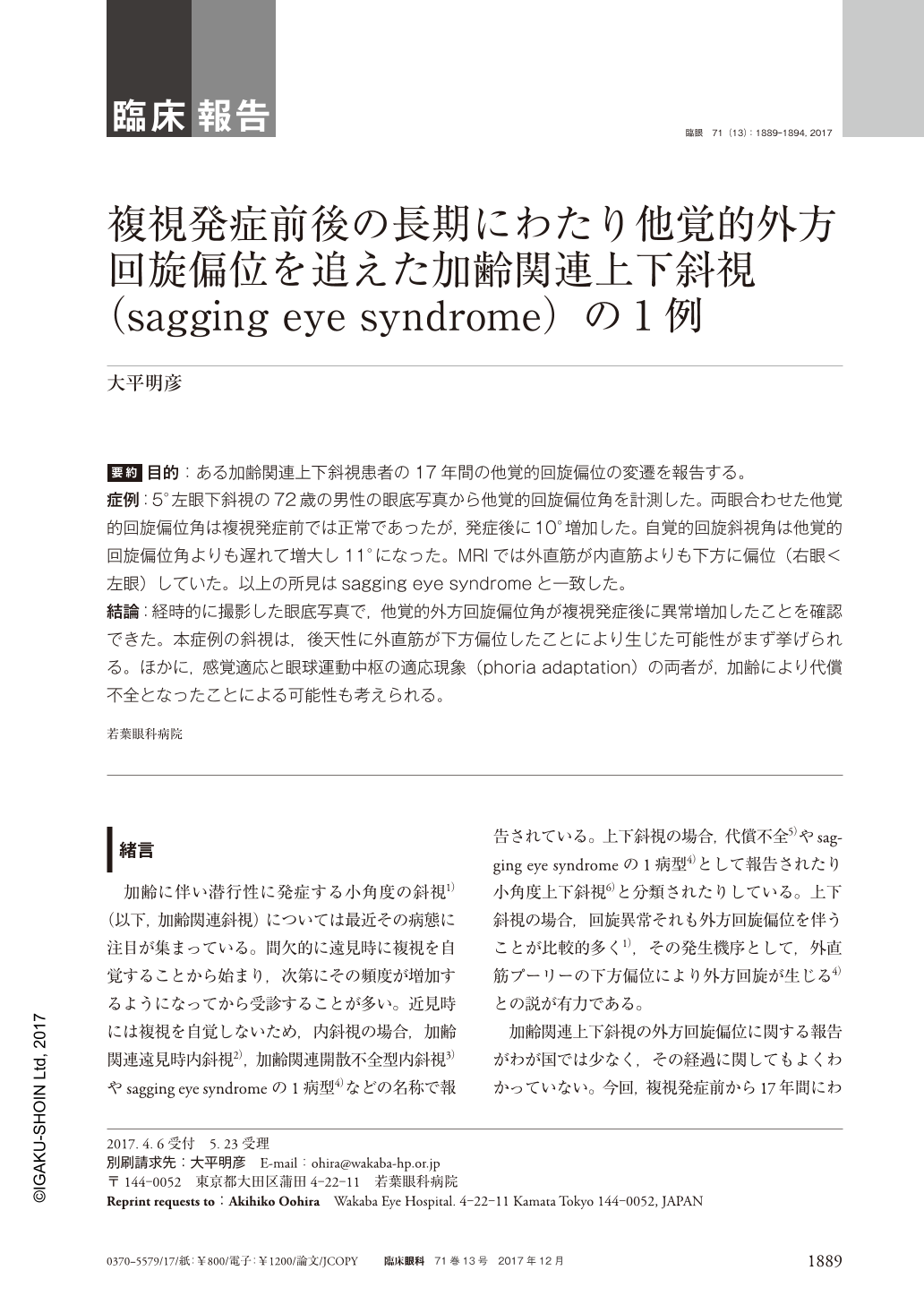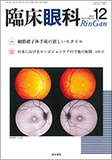Japanese
English
- 有料閲覧
- Abstract 文献概要
- 1ページ目 Look Inside
- 参考文献 Reference
要約 目的:ある加齢関連上下斜視患者の17年間の他覚的回旋偏位の変遷を報告する。
症例:5°左眼下斜視の72歳の男性の眼底写真から他覚的回旋偏位角を計測した。両眼合わせた他覚的回旋偏位角は複視発症前では正常であったが,発症後に10°増加した。自覚的回旋斜視角は他覚的回旋偏位角よりも遅れて増大し11°になった。MRIでは外直筋が内直筋よりも下方に偏位(右眼<左眼)していた。以上の所見はsagging eye syndromeと一致した。
結論:経時的に撮影した眼底写真で,他覚的外方回旋偏位角が複視発症後に異常増加したことを確認できた。本症例の斜視は,後天性に外直筋が下方偏位したことにより生じた可能性がまず挙げられる。ほかに,感覚適応と眼球運動中枢の適応現象(phoria adaptation)の両者が,加齢により代償不全となったことによる可能性も考えられる。
Abstract Purpose:To present a report of objective excyclotorsion in a case of age-related vertical strabismus(sagging eye syndrome)followed up for 17 years.
Case:A 72-year-old male was referred to us for intermittent diplopia since 3 years before.
Findings and Clinical Course:Corrected visual acuity was 1.2 in either eye. The left eye showed hypotropia of the left eye by 5 degrees. The objective cyclotorsion was evaluated by fundus photographs. Binocular objective excyclotorsion, or addition of angle of both eyes, was within normal limits before onset of diplopia, and increased by 10 degrees afterwards. Subjective excyclotropia developed later and increased to 11 degrees. MRI of the orbit showed infradisplacement of the lateral rectus when compared with medial rectus muscle. The displacement was greater in the left than the right orbit. These findings led to the diagnosis of sagging eye syndrome.
Conclusion:Fundus photographs taken at different occasions showed increase of excyclotorsion after onet of diplopia. Vertical deviation in the present case appeared to be caused by infradisplacement of lateral rectus muscle. Additionally, impaired phoria and sensory adaptation in the central nervous system may have contributed to the strabismus.

Copyright © 2017, Igaku-Shoin Ltd. All rights reserved.


